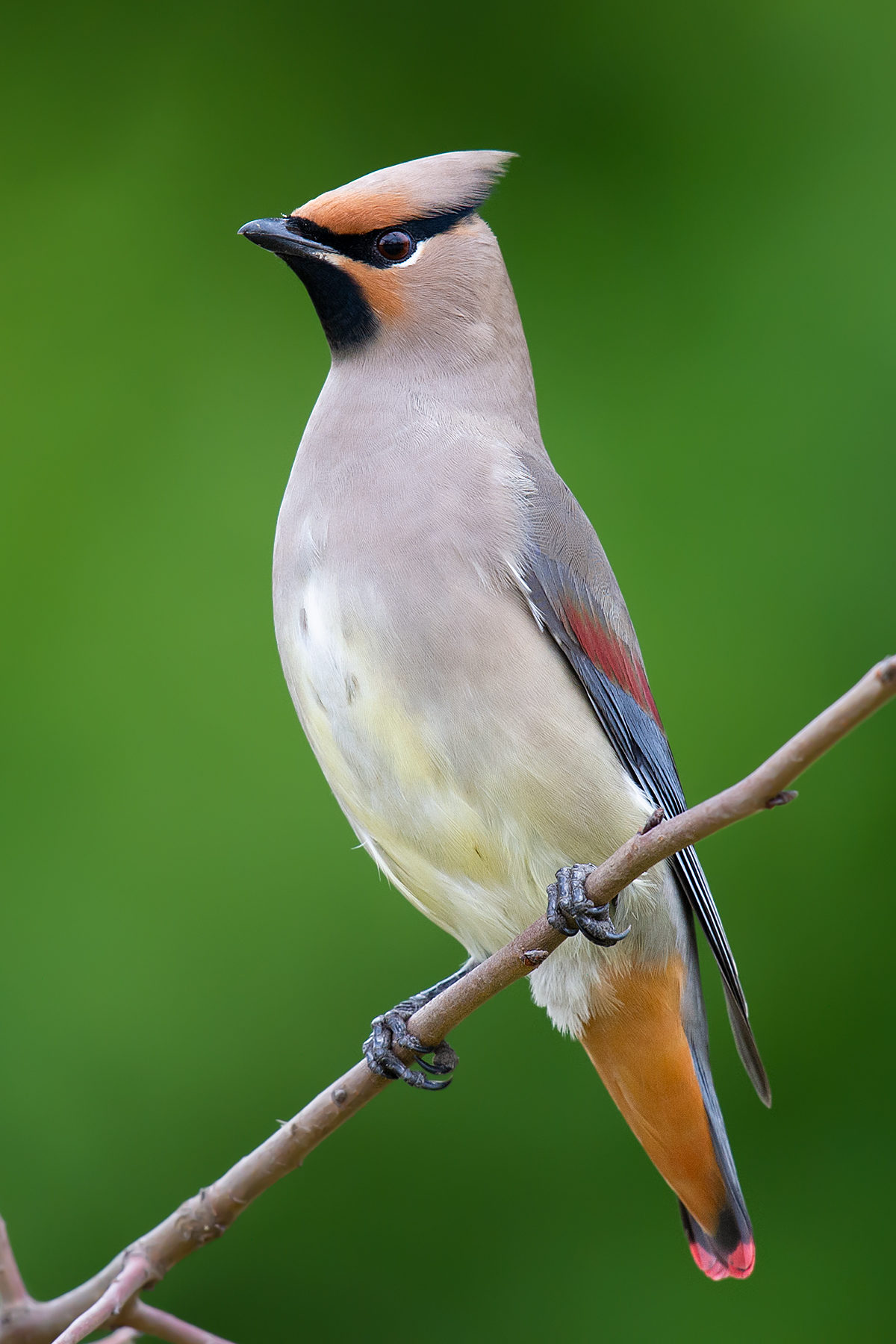
by Craig Brelsford
Founder, shanghaibirding.com
Shanghai birders record Japanese Waxwing Bombycilla japonica and Bohemian Waxwing B. garrulus centralasiae irregularly in the urban parks, on the coast, and in suburban western Shanghai. Japanese Waxwing is reported nearly three times as often in Shanghai as Bohemian. Binjiang Forest Park in Pudong has both the most records and the largest recorded flocks, with counts as high as 40. Century Park is second to Binjiang in the number of records. Cape Nanhui has records of both species, all of individuals and small groups. Nearly all waxwing sightings in Shanghai occur between November and February. There are a handful of records from March, April, and May (eBird 2020).
I have noted Japanese Waxwing in November, December, and January at Binjiang and in January on Chongming Island. Bohemian Waxwing were mixed in with the flocks I saw of Japanese at Binjiang. I also have a record of a single Bohemian Waxwing on Lesser Yangshan Island in November.
Improve your chances of ticking waxwings in Shanghai by reading the species descriptions below and studying the photos.
JAPANESE WAXWING
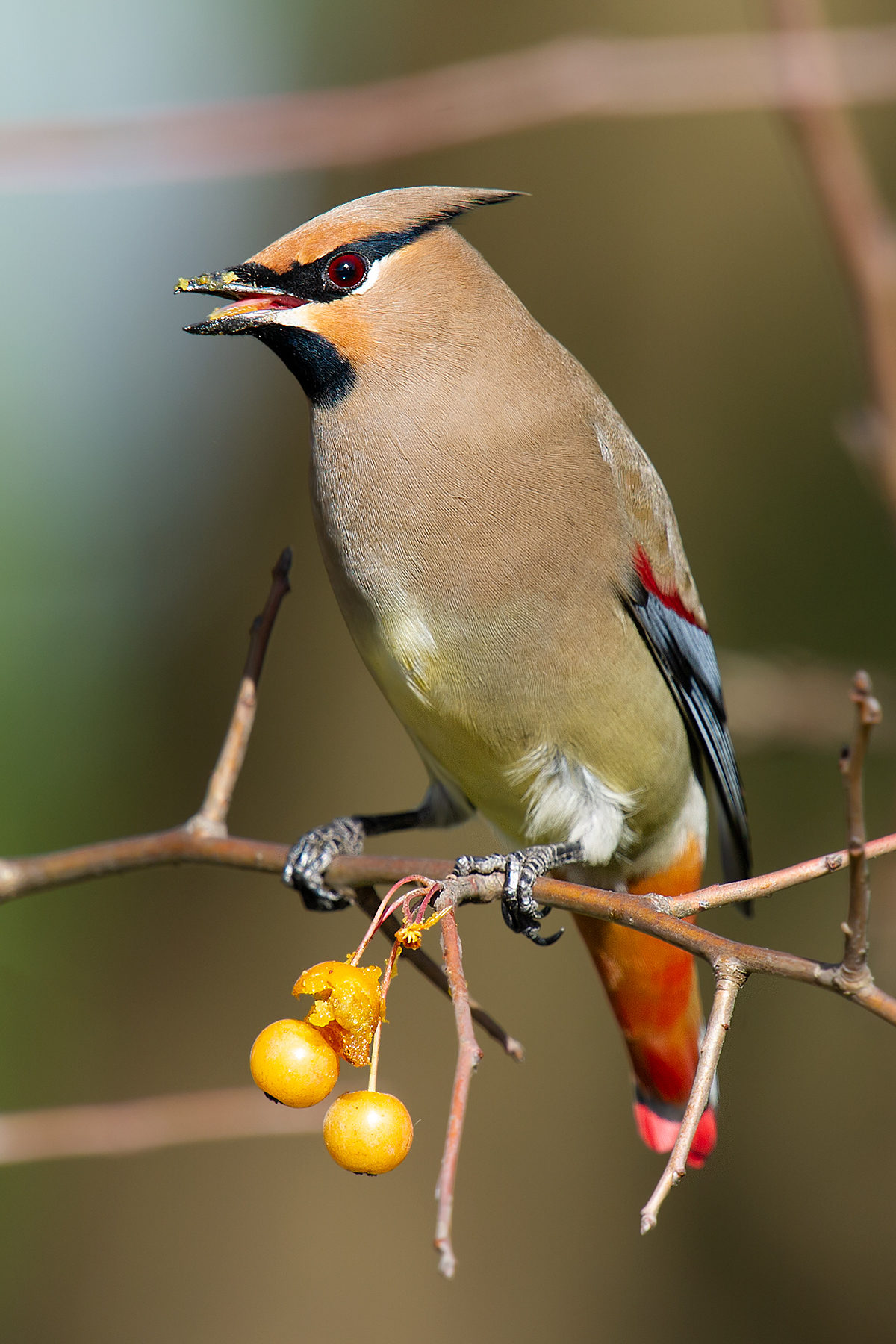

Japanese Waxwing Bombycilla japonica is an irregular winter visitor and passage migrant in Shanghai. Breeds nearly exclusively in Russian Far East (E Yakutia, Amur, Khabarovsk, N Sakhalin). In China is irregular breeder in Lesser Khingan Mountains in Heilongjiang. Does not breed in Japan. Winters mainly eastern China, also Korea and Japan. More irregular south of Yangtze, but reported as far south as Fujian and Yunnan and as far west as Qinghai. BEHAVIOR In winter almost entirely frugivorous and almost always in flocks. Mixed flocks often contain Bohemian Waxwing. DESCRIPTION Thick neck and short tail give plump appearance. Has narrow black mask, from eye extending upward below crest, giving angry facial expression; eyeline meets on forehead and (unlike in Bohemian) connects at rear of crest. Black bib (clear-cut in male, more diffuse in female); white at lower base of bill and part of eye-ring (below rear part of eye). Forehead and malar cinnamon-brown, rest of head buff, turning greyish-brown on nape, mantle, and wing coverts; lower back, rump and uppertail coverts grey. Tail grey at base, with black subterminal band and red tip. Underparts pale greyish-brown, with varying amount of pale yellow on belly. White between and behind legs; vent and undertail coverts dull orange, but sometimes remarkably crimson. Has red band on greater coverts that in flight appears as small wing bar. Primary coverts blue-grey with broad black tips; secondaries grey with black subterminal band and red tips (but no red appendages, as on Bohemian). Primaries edged blue-grey on sides; the edging together with blue-grey on primary coverts and secondaries make wing look more blue-grey than black. Adult primaries tipped white (with red dots on a few outer webs), making “V” markings on closed wing (markings on outer web longer in Bohemian, making a connected line). Females have thinner V’s, and juveniles lack white on inner webs, having instead of “V” markings a white line along edge of folded wing. COMPARISON Easily distinguished from Bohemian by red terminal band on tail. Smaller and slimmer than Bohemian, and swept-back, pointed crest shorter than Bohemian. Wing pattern also different; Japanese lacks white and yellow in secondaries and wing coverts, instead having red band on median coverts, and broad black tips to grey greater coverts and primary coverts. Bohemian lacks yellow belly spot. BARE PARTS Bill short, black; strong feet black; iris brown. VOICE Pleasant trills, often delivered in flight, shorter, higher-pitched and less ringing than Bohemian. — Craig Brelsford
BOHEMIAN WAXWING
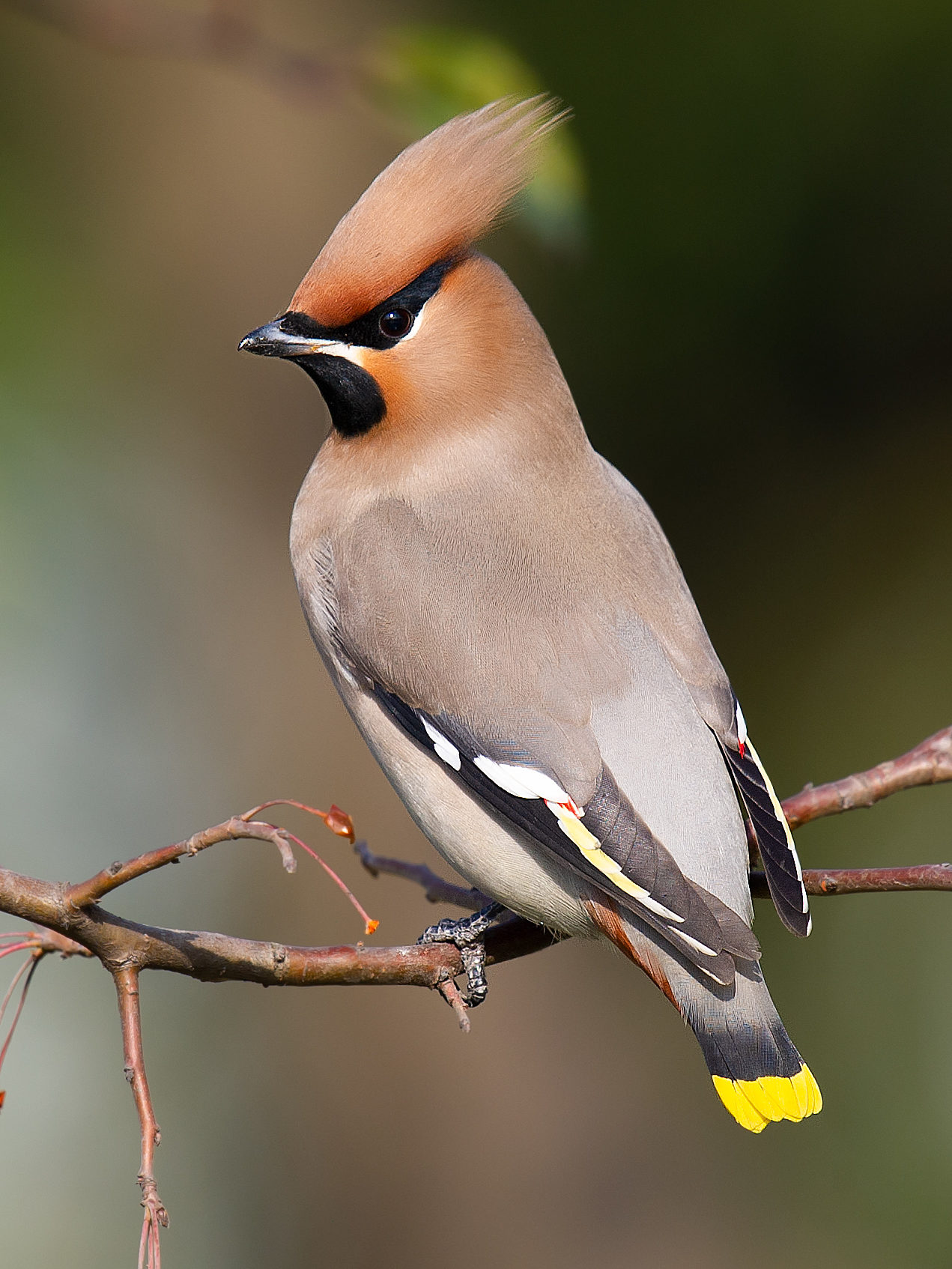

Bohemian Waxwing Bombycilla garrulus centralasiae is an unpredictable and irruptive winter visitor to most of China north of the Yangtze and as far west as Qinghai and Xinjiang; sporadically to southern China and Taiwan. In Shanghai, reported about a third as often as Japanese Waxwing. BEHAVIOR In winter among most frugivorous of birds. Mostly insectivorous in summer, catching insects in aerial flights. Non-breeding usually in flocks, flying quickly and in tight formation, like starlings. DESCRIPTION Starling-sized, mainly buffy and greyish-brown, with long, swept-back, pointed crest and distinctive markings on wing. Thick neck and short tail give plump appearance. Has narrow black mask, from eye extending upwards below crest, giving angry facial expression; black meets on forehead but, unlike in Japanese, not on hindcrown. Black bib (clear cut in male, slightly more diffuse in female); white at lower base of bill and part of eye-ring. Forehead and malar cinnamon-brown, rest of head buff, turning greyish-brown on nape, mantle, and wing coverts; lower back, rump and uppertail coverts grey; tail grey at base, then black with broad yellow terminal band (narrower and paler in first-winter female). Underparts pale buffish-grey (palest on belly); deep rusty vent and undertail coverts. Primaries, primary coverts, and secondaries black with broad white tips to primary coverts and secondaries forming two bars; inner secondaries tipped with wax-like red appendages, most extensive in adult males and faint in first-winter females. Adult primaries tipped white on inner webs and yellow on outer webs (whiter towards wing tip), making “V” markings on closed wing; females have thinner V’s; juveniles lack white on inner webs and have less yellow, so instead of “V” markings have a mostly white line along edge of folded wing. COMPARISON Easily distinguished from smaller and more slender Japanese by yellow terminal band on tail (red on Japanese). Bohemian has longer crest and deeper chestnut vent and undertail coverts and lacks yellow spot on belly. BARE PARTS Bill short, black; strong feet black; iris brown. VOICE In winter, soft, ringing trills, often given in flight. — Craig Brelsford
PHOTOS
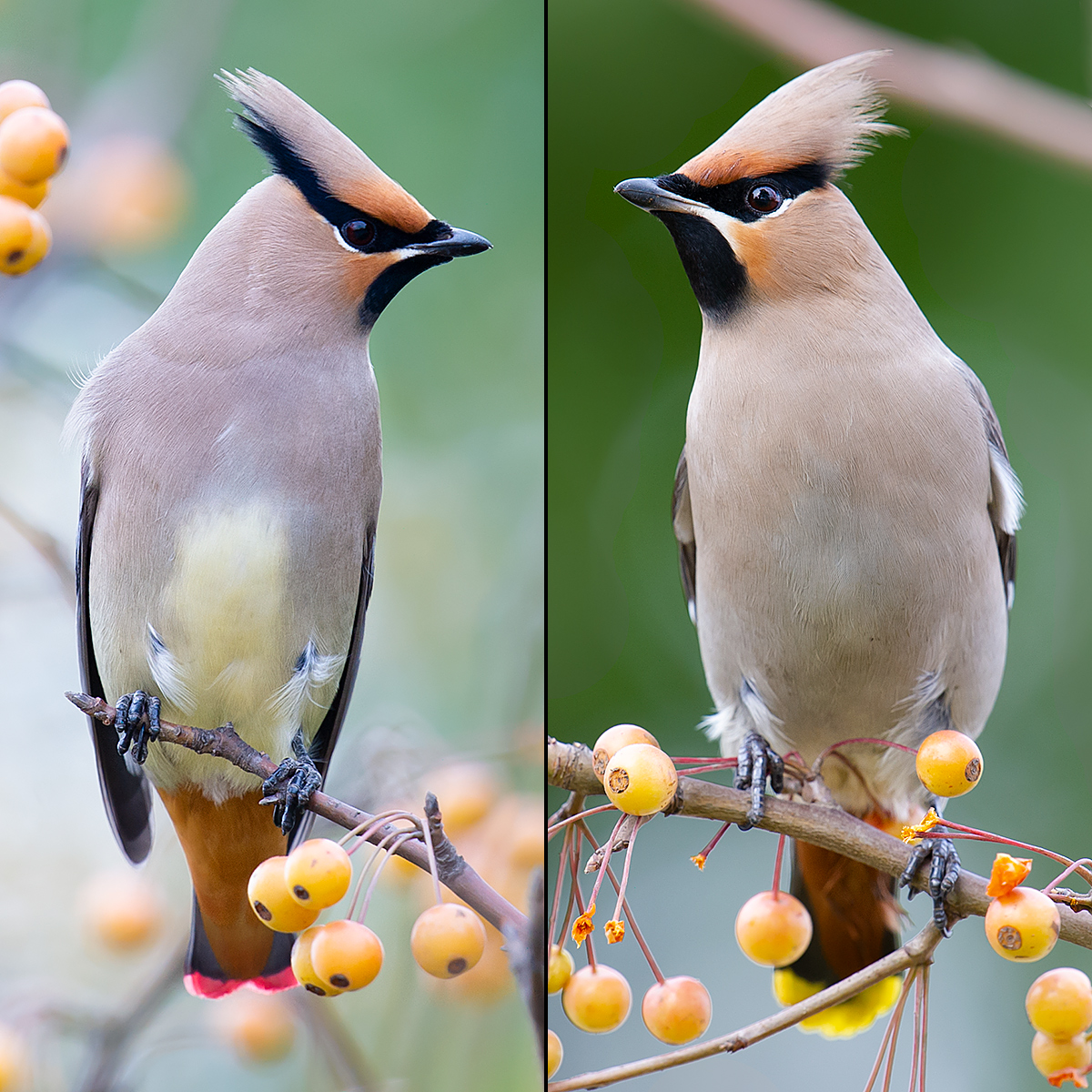
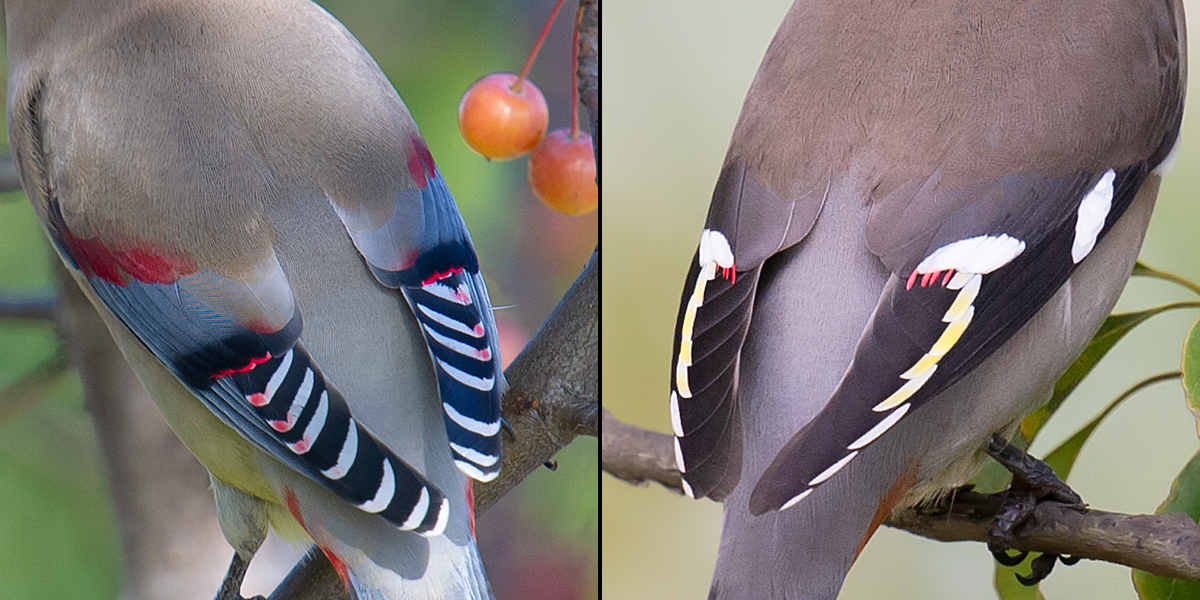
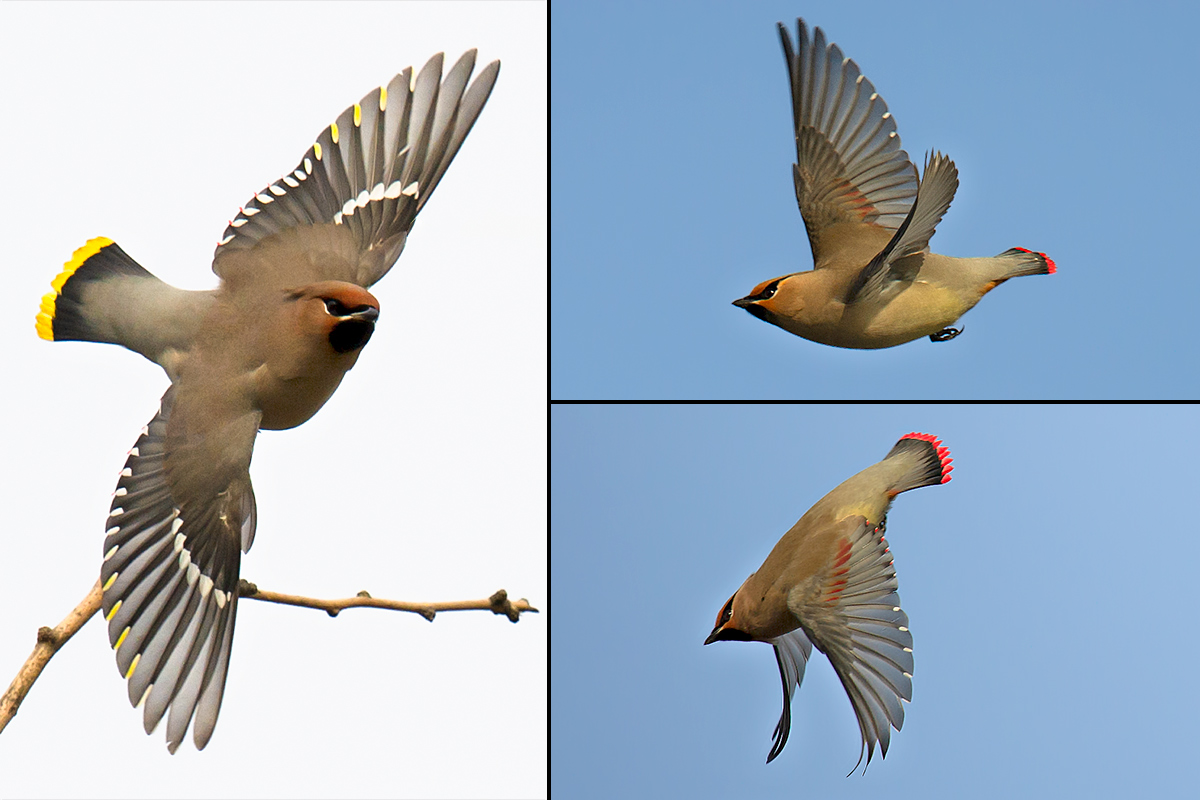
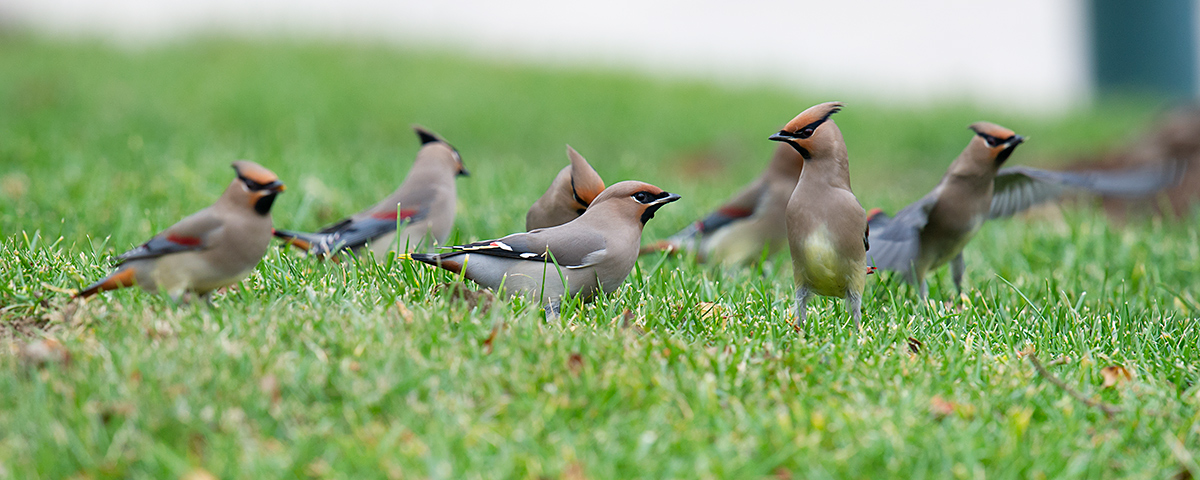
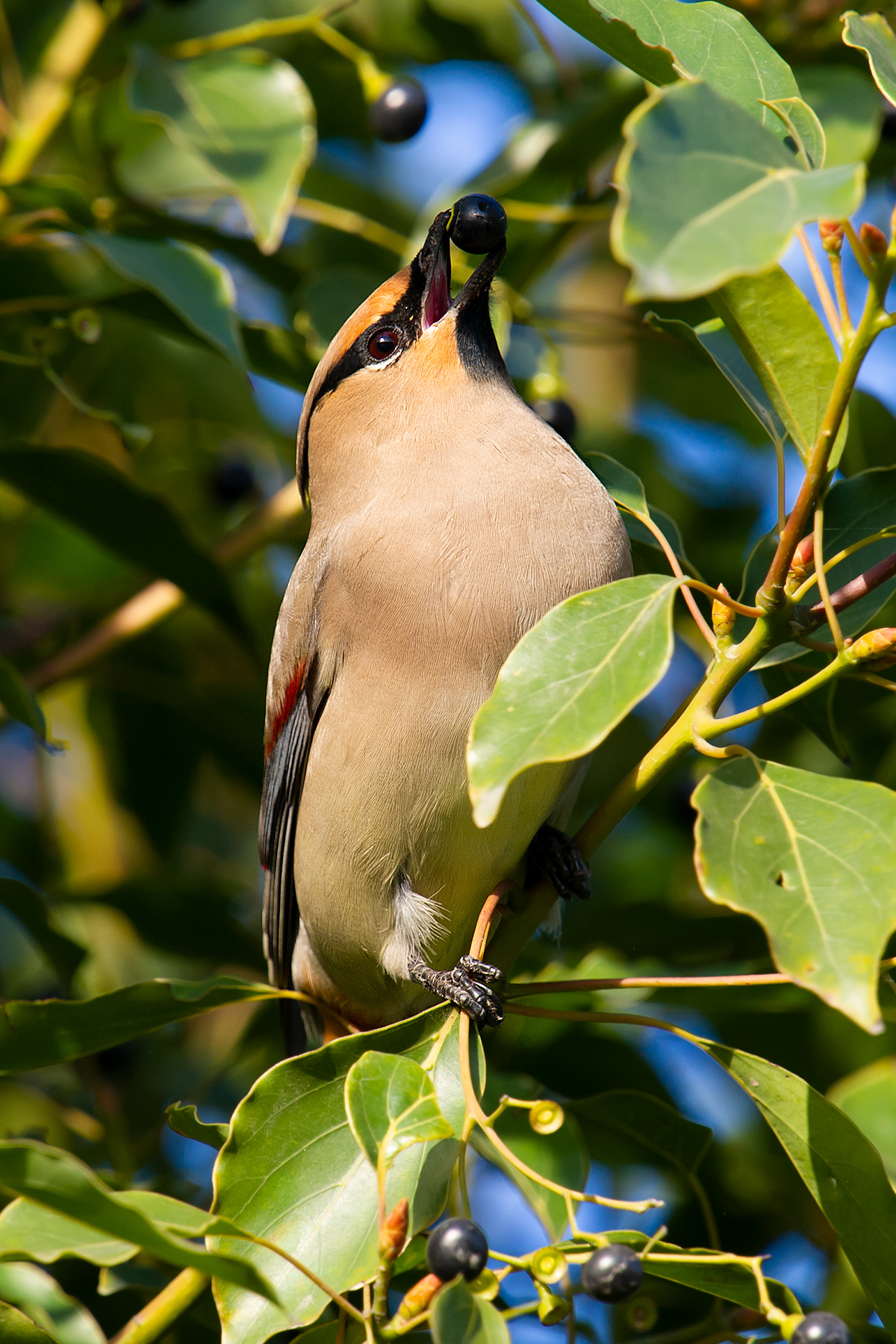
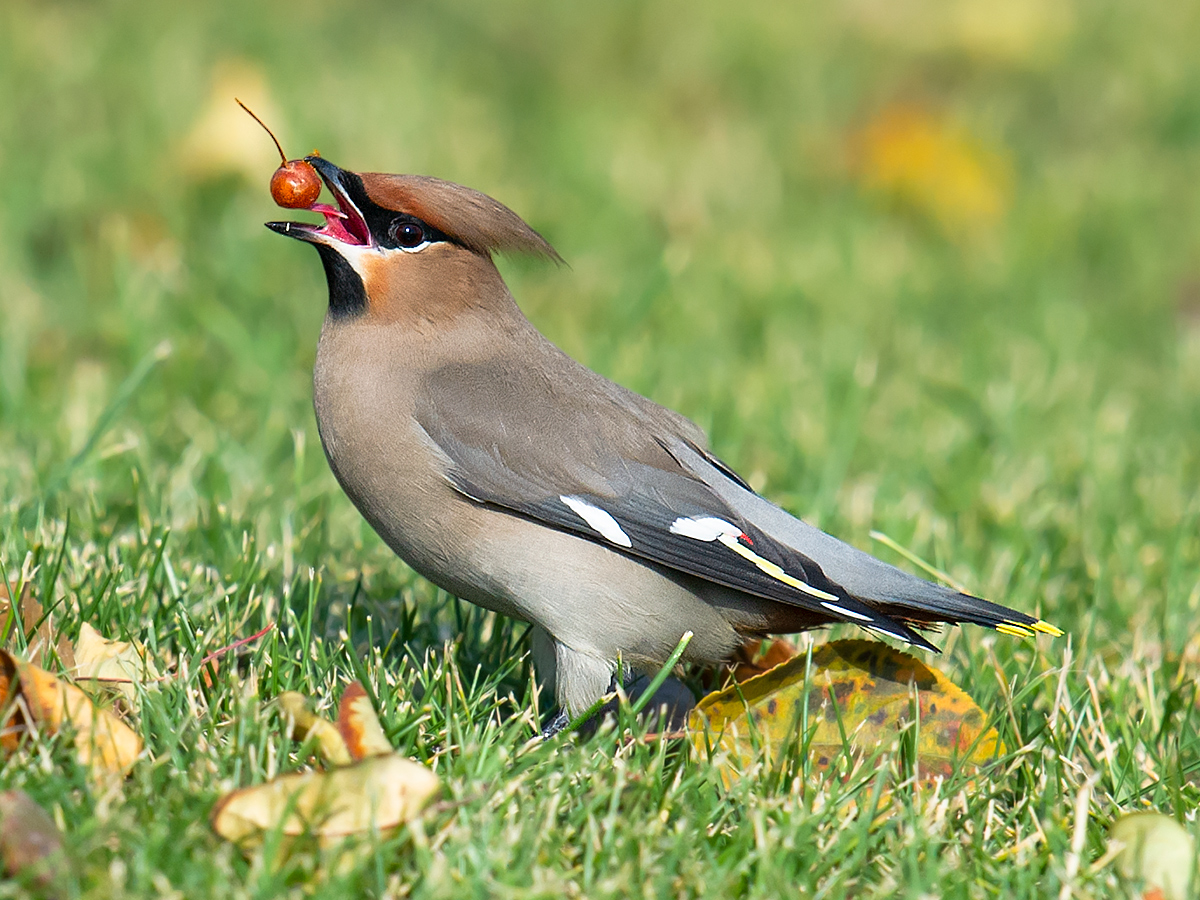
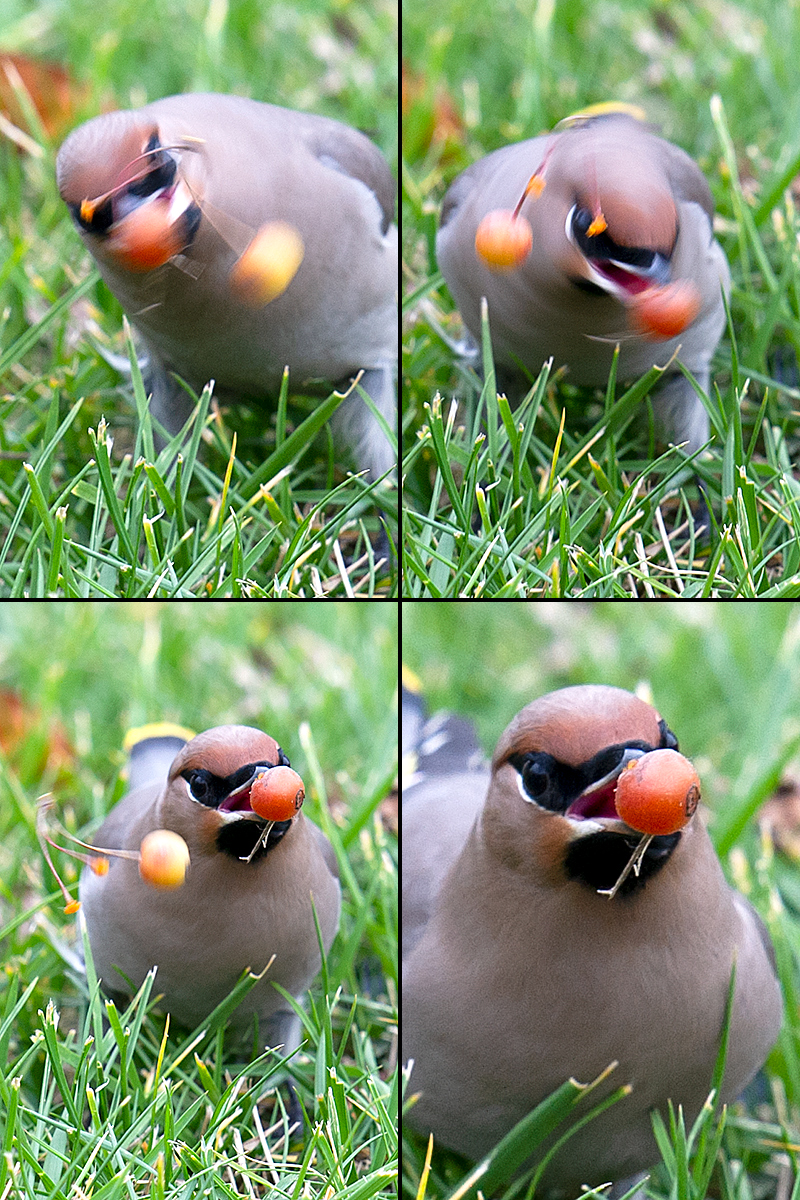
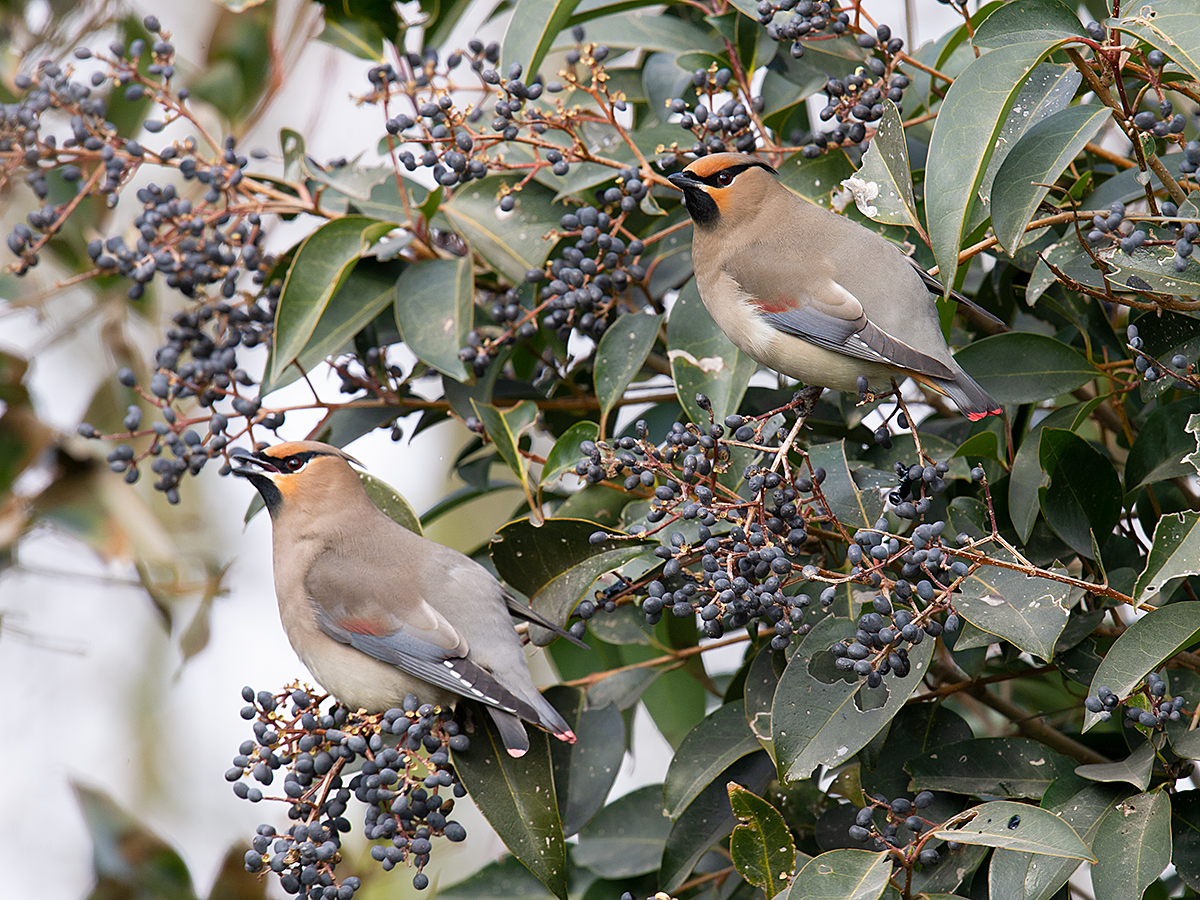
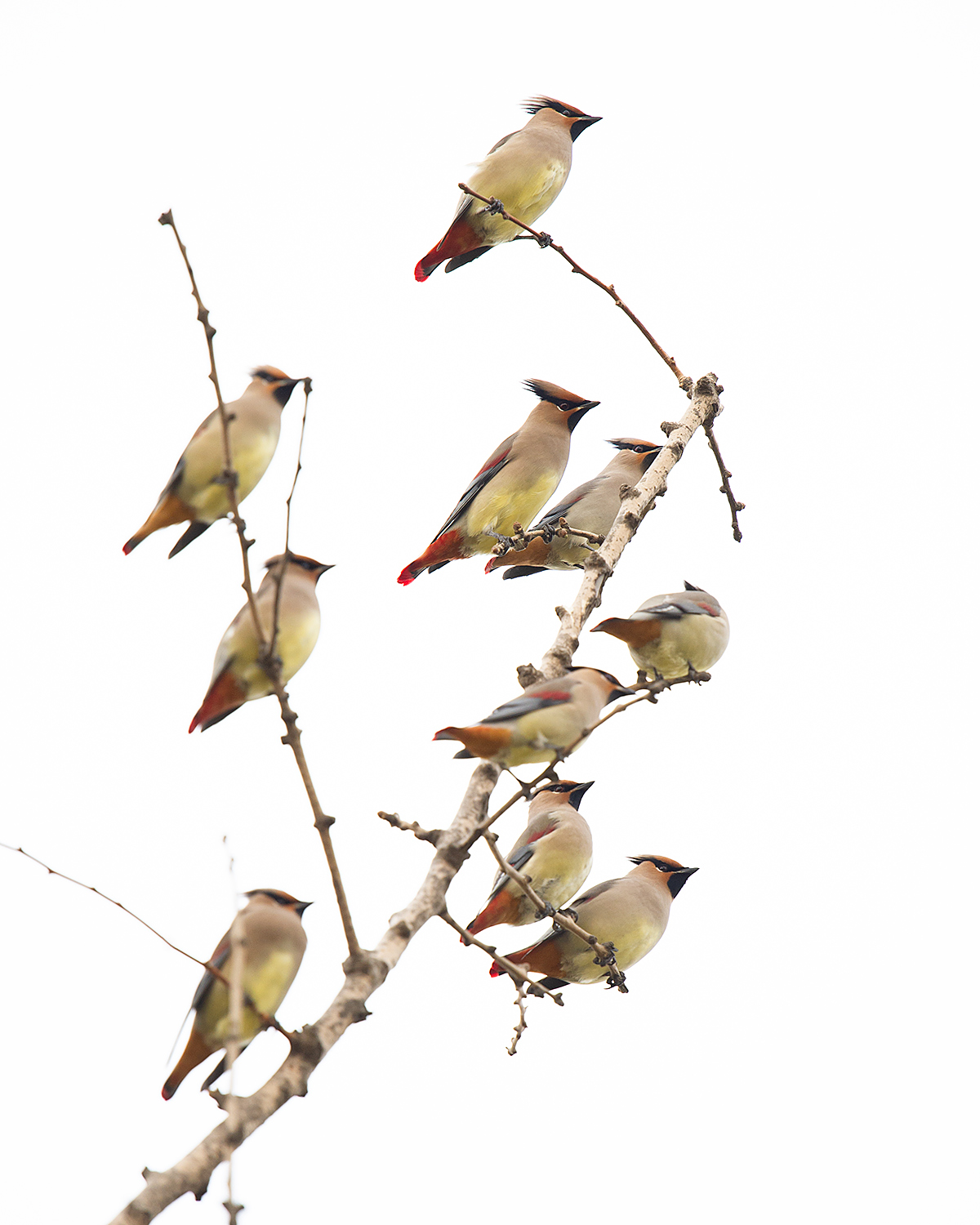
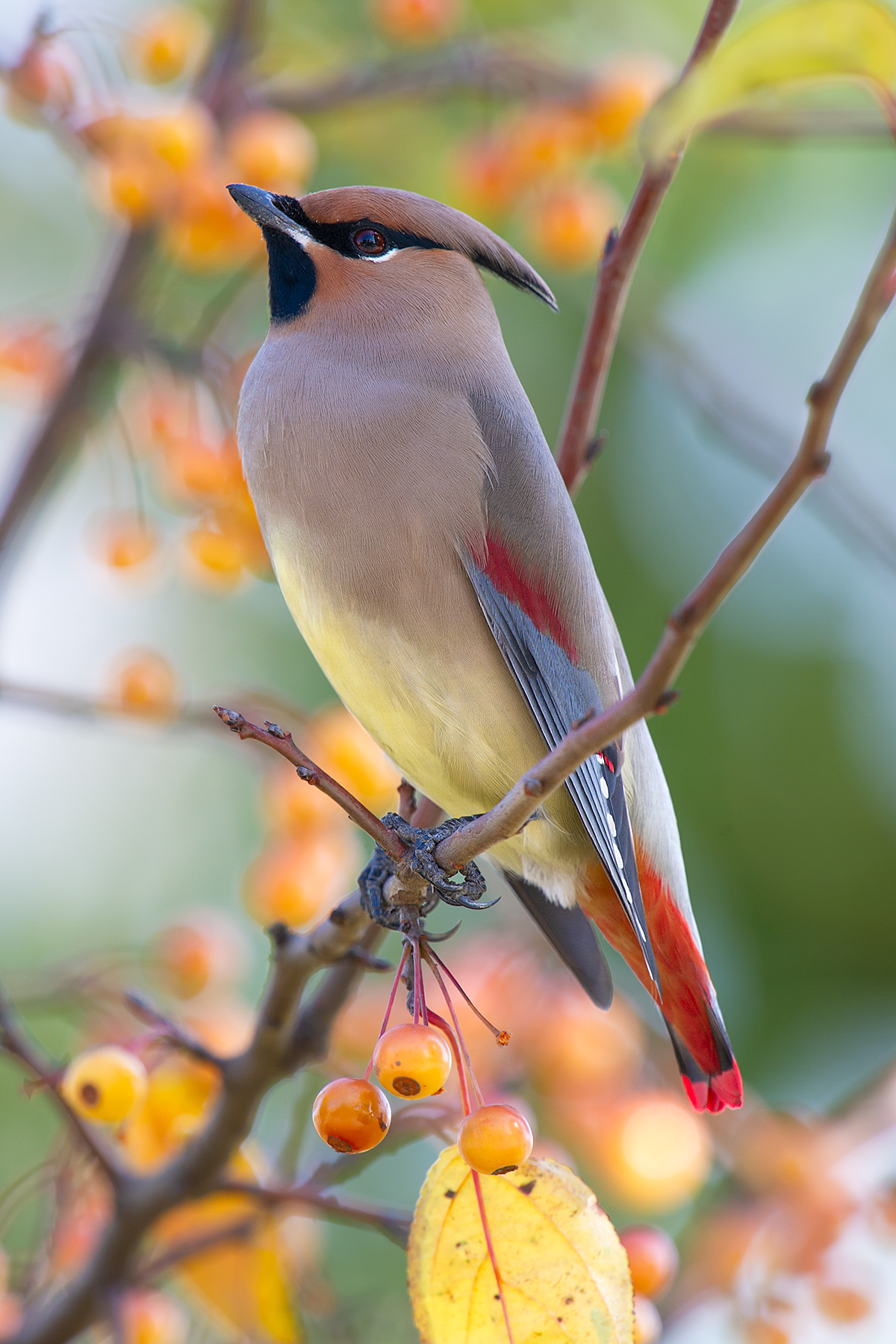
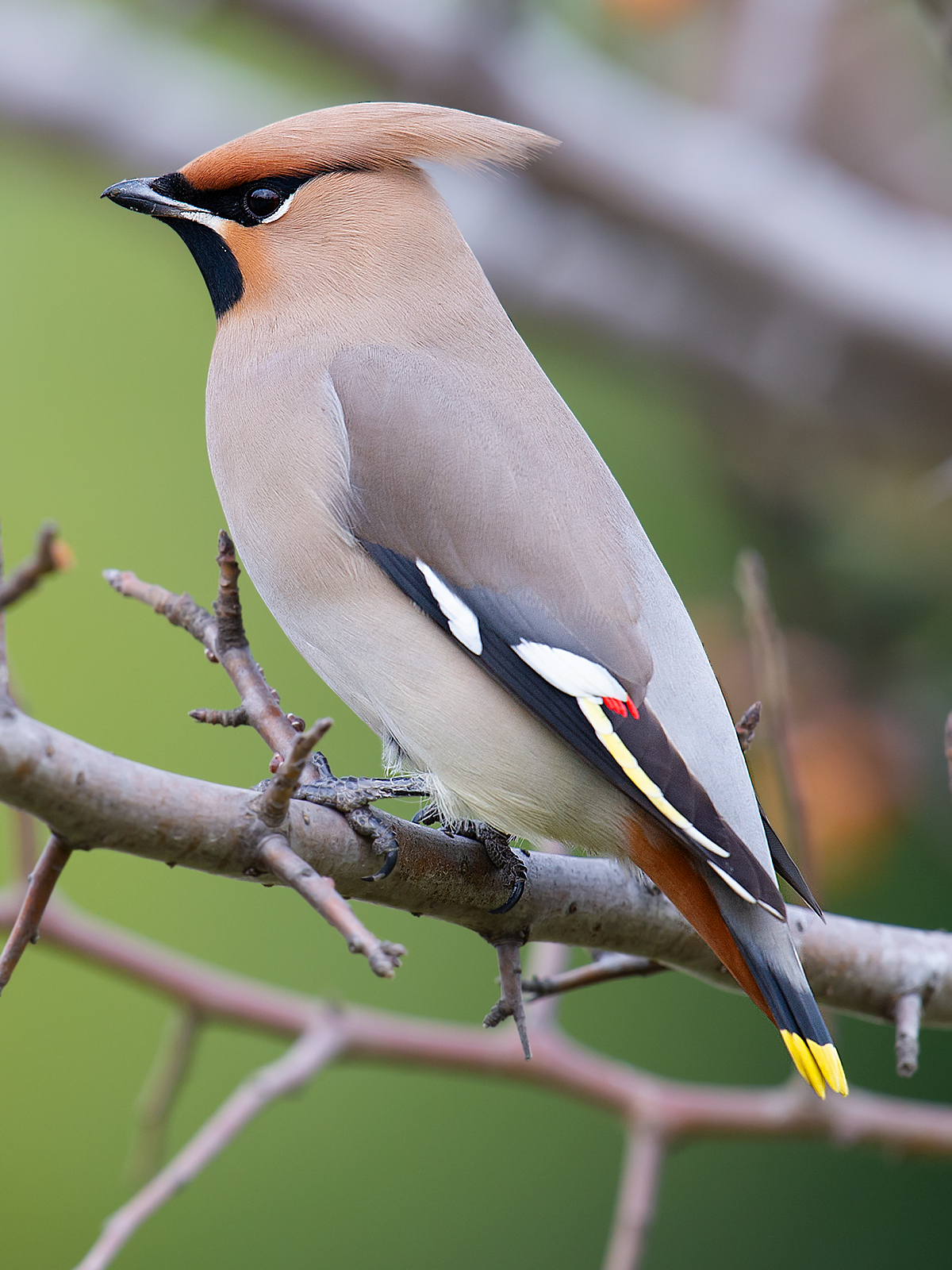
ACKNOWLEDGEMENTS
Daniel Bengtsson served as chief ornithological consultant for my Photographic Field Guide to the Birds of China, which I am publishing in bits and pieces on this website, and from which the species descriptions above are drawn.
BIBLIOGRAPHY
Brazil, Mark (2009). Birds of East Asia. Princeton University Press, New Jersey.
Brazil, Mark (2018). Birds of Japan. Helm Field Guides, London.
eBird (2020). eBird: An online database of bird distribution and abundance [web application]. eBird, Cornell Lab of Ornithology, Ithaca, New York. Waxwings in Shanghai (Japanese: https://ebird.org/species/japwax1/CN-31; Bohemian: https://ebird.org/species/bohwax/CN-31). Waxwings in China (Japanese: https://ebird.org/species/japwax1/CN; Bohemian: https://ebird.org/species/bohwax/CN). Accessed: 3 Aug. 2023.
MacKinnon, John & Karen Phillipps (2000). A Field Guide to the Birds of China. Oxford University Press.
Mountjoy, D.J. (2005). Family Bombycillidae (Waxwings). Pp. 316–7 in del Hoyo, J., Elliott, A. & Christie, D.A. eds. Handbook of the Birds of the World. Vol. 10. Cuckooshrikes to Thrushes. Lynx Edicions, Barcelona.
Svensson, Lars, Killian Mullarney, & Dan Zetterström (2009). Collins Bird Guide: The Most Complete Guide to the Birds of Britain and Europe. 2nd ed. HarperCollins, London.

Beautiful photos. Glad your newsletter is still operating. Excellent narration. Thank you Craig.
Thanks, Kate. shanghaibirding.com is still very much in operation and shall remain in operation. I built up a mass of material during my 10 years in China, and I intend to publish much of it in the years to come.
Timing is perfect! We just saw our first Bohemian of the year here in central Oregon. We seldom have Bohemians as they usually stay in eastern Oregon, and some old ones in San Francisco (;-)).
It was a great pleasure and huge honor to be a “chief consultant” on your fantastic field guide efforts! It made me dig deeper into identification “hardships” than I probably would ever have done otherwise. In other words, it was a great opportunity of development for me as well!
Those days working together were great days, Daniel. You and I completed hundreds of species, and I am steadily publishing our product on shanghaibirding.com. Our work may not have made it into book form, but it is still reaching birders!
Keep it coming!
Two separate small flocks of Japanese in the northern isles of the Philippines this winter too. Only the second and third records.
Thanks for the report!
Superb article, with extraordinarily good pictures! You had every angle you needed for the right comparisons, juxtapositions etc. Japanese Waxwing will be a hot target for European birders, its beauty adds to it’s being sought after, just as Waxwings can sometimes be elusive. You find a nice flock one day, next day it’s gone, third day it’s back, etc.